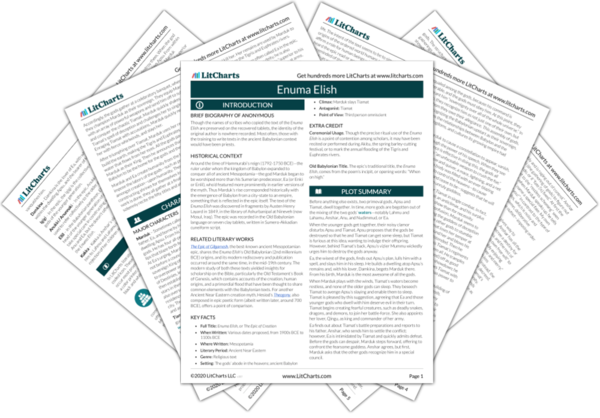Marduk continues the work of setting creation in order and containing chaos by making sure that Tiamat’s waters cannot stir up conflict anymore. As the chief of gods, he also appoints places for the worship of lesser deities, including Ea, the one he’s particularly displacing. There’s continuity with former religious patterns, then, but there’s also no question about who now dominates.
